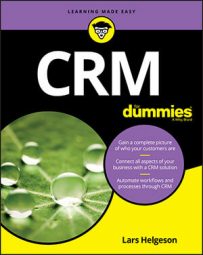You can connect forms to an automated follow-up campaign. The user requests information to learn about automated sales, and receives a series of emails about automation.
The important part of this engagement, particularly at these early stages, is consistency. Your message to leads and clients must reflect your brand and what you stand for at every stage. To this end, you must understand what all those touchpoints are, so leads and customers get the information they need when they need it.
Knowing when and how to communicate with leads and clients requires you to build a model of your customer journey. This journey begins at the first mention of your brand to a potential customer. Whenever possible, automate those communication methods so your team can focus on the critical personal touch when and where it matters most.This reason is why the use of workflows is critical for the business. A workflow is a predefined method for taking an action. These methods call upon the software connected to your CRM to take action. It’s up to you to define these workflows; here are a few workflows:
- Landing page
- Customer fills out lead capture form.
- Automatic sequence of emails is sent every day for three days (also known as an auto-responder).
- A customized brochure created by a print shop using a variable print-on-demand template is sent to the customer.
- Salesperson has a follow-up activity created in the CRM for the following day.
- Call-in
- Customer calls in for support.
- Conversation is automatically recorded and attached to CRM record.
- Customer is sent an email with a satisfaction survey.
- If the survey is returned with a score below a minimum threshold, create a CRM activity for the support manager to follow up with the customer.
- Email campaign
- Newsletter is sent to email list with an important call to action.
- Customer clicks a button.
- Customer visits a page with a video on it.
Workflows can take many forms and are limited only by your imagination and the capabilities of the CRM and marketing automation software platform you’re working with. Workflows are why it’s important to create your story arcs and understand how managing process can and should work within your organization. The more you can automate workflows with software, the better you can control the customer’s experience and measure the effectiveness of your methods.
Sending automated and transactional messages for CRM
When people take actions that you can use as a reason for sending automated messages, you open the door to increased customer engagement, satisfaction, and promotion of your brand. In the world of marketing automation, you must identify as many triggers as possible that could justify sending an automated email.A trigger can be an obvious action, such as when someone makes a purchase or requests information from you, but it also can also be when someone visits a high-value page, such as a webpage explaining details for your flagship product. Here is a flowchart of what happens after someone buys a product from your website.
Each message you send to a customer after a purchase is an opportunity to confirm someone’s actions (such as a transaction receipt), educate the consumer (why she’s getting this email and tips to help her), and learn more about what you do. Even if it’s subtle, links in an automated or transactional email to your website open the door for you to sell consumers on more products and services. If you provide an incentive for doing so, such as a discount code, you greatly increase your chances of converting a lead to a contact, which in turn improves conversion rates, driving revenues.
Scheduling the right CRM activities
Workflows can be used to set up CRM activities for your sales team. When you need to ensure a human does something, setting up CRM activities is the best way to do it. These activities can be to make a follow-up call, write a personalized email, or accomplish another offline task.It can be tempting to set up activities for every possible scenario, but be careful to not overwhelm your staff. Be sure that when creating a CRM activity, the person you’re assigning the activity to won’t be given meaningless or too many tasks.
When you schedule CRM activities for opportunities (high-value sales), don’t forget to include activities for ensuring every aspect of the opportunity is closed when the deal is won. Include activities related to quality assurance, so the customer has the best experience possible.

